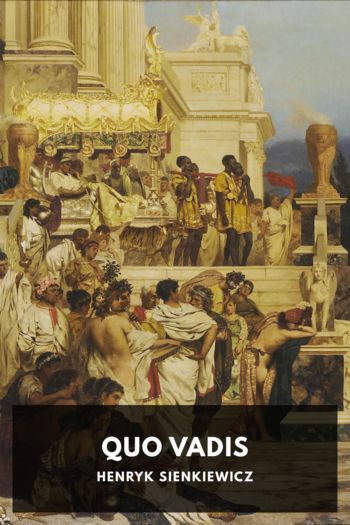With Fire and Sword - Henryk Sienkiewicz (ink book reader .TXT) 📗

- Author: Henryk Sienkiewicz
Book online «With Fire and Sword - Henryk Sienkiewicz (ink book reader .TXT) 📗». Author Henryk Sienkiewicz
Helena grew up quietly at Rozlogi under the tender care of her uncle, and only after his death did painful times begin for her. The wife of Constantine, from a family of dubious origin, was a stern, impulsive, and energetic woman, whom her husband alone was able to keep within bounds. After his death she gathered into her iron hand the management of Rozlogi. The serving-men trembled before her, the house-servants feared her as fire, and soon she made herself known to the neighbors. During the third year of her management she attacked the Sivinskis of Brovarki twice with armed hand, dressed in male attire and on horseback, leading her servants with hired Cossacks. Once when the regiments of Prince Yeremi scattered Tartar bands, plundering in the neighborhood of Semi Mogil, the princess at the head of her people cut to pieces the remnant that had escaped as far as Rozlogi. She had settled for good in Rozlogi, and began to consider the place as the property of herself and her sons. She loved these sons as the wolf loves her young, but being rude she had no thought of a proper education for them. A monk of the Greek rite from Kiev taught them to read and write; here their education ended. It was not far to Lubni, where Vishnyevetski’s court was, at which the young princes might have acquired polish and trained themselves to public business in the Chancery, or entered the school of knighthood under his banners. The princess, however, had reasons of her own for not sending the young men to Lubni.
Prince Yeremi might remember to whom Rozlogi belonged, and might look into the guardianship of Helena, or in memory of Vassily might take that guardianship upon himself; then she would undoubtedly have to move away from Rozlogi. The princess preferred, therefore, that in Lubni they should forget there were Kurtsevichi on earth. So the young princes were reared half wild, more as Cossacks than as nobles. While still young, they took part in the quarrels of the old princess, in attacks on the Sivinskis, and in her expeditions against Tartars. Feeling an innate aversion to books and letters, they fired arrows from bows for whole days, or took exercise in the management of their fists or sabres and lariats. They never occupied themselves with the estate, for their mother would not let that out of her own hands. It was sad to look at those descendants of a noted stock in whose veins princely blood was flowing, but whose manners were harsh and rude, and whose ideas and dull hearts reminded one of the uncultivated steppe. Meanwhile they were growing up like young oaks; seeing their own ignorance, they were ashamed to live with the nobility; on the contrary, the companionship of wild Cossack leaders was more agreeable. When old enough, therefore, they went with companies to the lower country, where they were considered as comrades. Sometimes they stayed half a year in the Saitch; went to “industry” with the Cossacks, took part in campaigns against the Turks and Tartars, which finally became their chief and favorite occupation.
Their mother was not opposed to this, for they often brought back abundant booty. But in one of these campaigns the eldest, Vassily, fell into pagan hands. His brothers, it is true, with the aid of Bogun and the Zaporojians, rescued him, but without his eyes. From that time Vassily was forced to remain at home; as formerly he had been the wildest of all, so then he became very mild and was sunk in meditation and religious exercises. The young men continued their warlike occupations, which at last obtained for them the surname of Prince-Cossacks.
A glance at Rozlogi-Siromakhi was enough to enable one to guess what kind of people lived there. When the envoy and Pan Yan drove through the gate with their wagons, they saw, not a castle, but rather a roomy shed built of enormous oak planks, with narrow windows like portholes. Dwellings for servants and Cossacks, the stables, the granaries, and storerooms were attached directly to the house, composing an irregular building made up of many parts, some high and some low. It would have been difficult to consider such a poor and rude exterior as a human dwelling, but for the lights in the windows. On the square in front of the house were two well-cranes; nearer the gate was a post with a ring on the top, to which was chained a bear. A strong gate of the same kind of planks as the house afforded entrance to the square, which was surrounded by a ditch and a palisade.
Evidently it was a fortified place, secure against attacks and incursions. It recalled in every regard the Cossack posts of the





Comments (0)